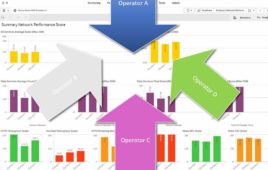 T-Mobile appears to be succeeding at holding onto its postpaid subscribers. Just 15.4 percent of T-Mobile postpaid respondents surveyed in a recent Cowen and Company report said they were looking to switch carriers. That’s a huge drop from the 42.9 percent T-Mobile respondents who said they were looking to switch in the third quarter.
T-Mobile appears to be succeeding at holding onto its postpaid subscribers. Just 15.4 percent of T-Mobile postpaid respondents surveyed in a recent Cowen and Company report said they were looking to switch carriers. That’s a huge drop from the 42.9 percent T-Mobile respondents who said they were looking to switch in the third quarter.
Of those Sprint postpaid respondents surveyed, 31 percent said they were looking to switch. That’s down from 41.7 percent in the previous quarter.
The big two also improved, with only 11.1 percent of AT&T postpaid respondents looking to change carriers, down from 31.6 percent last quarter. Verizon saw the least amount of variance in the metric, rising to 17 percent from 15.7 percent last quarter.
The reason wireless subscribers are looking to switch has also shifted. The days of churning for a device, better network or customer service are over. Increasingly churn is motivated by price.
According to the survey, fully 75 percent of Verizon subscribers that plan on switching are leaving for a better price. That’s up from 58 percent in the last quarter. AT&T isn’t charming customers with rate either. Fully 65 percent of AT&T subscribers looking to switch will do so for a better deal. That’s up from 41 percent in the previous quarter.
Perhaps most interesting is that devices are no longer a draw for end users.
“Nobody is leaving any carrier for phones, suggesting device parity awareness has finally arrived,” the report noted.
The recently announced upgrade plans from the various carriers haven’t really caught on yet. Cowen and Company found that just 13.3 percent of T-Mobile customers said they had subscribed to Jump, while 7.4 percent of AT&T customers had subscribed to that company’s program. Only 4.4 percent of Verizon customers had subscribed to Edge.
Surprisingly. Sprint saw 11.3 percent its customers subscribe to its “One Up” program. The carrier announced it was doing away with that program.
Cowen and Company publishes its Wireless Survey each quarter ahead of earnings. The report includes responses from 1,876 respondents.




